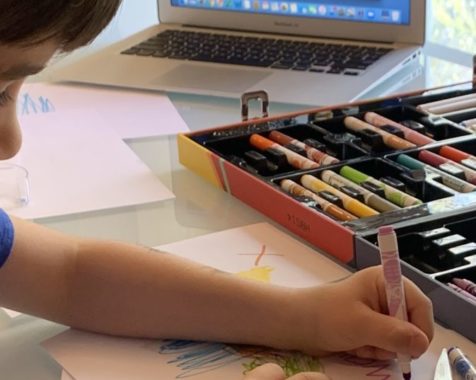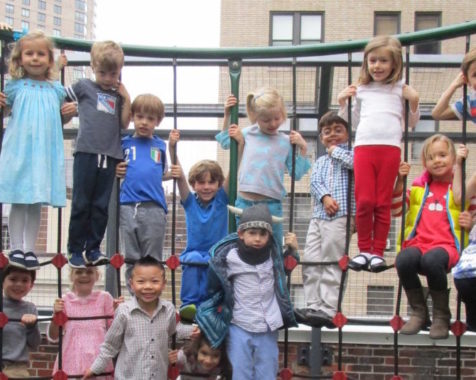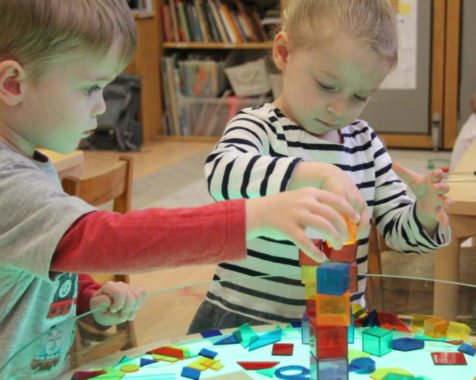An excerpt from “COVID-19: Five Helpful Responses for Families” by Becky Bailey.
Kids don’t say, “Beloved parent, I’m having difficulty in my daily life. I don’t fully understand what’s happening, I miss my friends, I’m afraid someone I know is going to die and it feels like life will never be normal again.” Instead, they throw tantrums, become clingy, sulk, backtalk, refuse to do anything you ask, wet the bed, pick fights with siblings and suddenly forget how to do basic tasks they mastered years ago.
Whew! Let’s step back, take a few deep breaths and learn a little about your child’s brain: Safety is the brain’s most basic need, followed closely by connection. When we feel unsafe or disconnected, our brains downshift from the higher centers responsible for learning and problem solving, to the lower reactionary centers. That’s why all those challenging behaviors are popping up, and why a minor frustration is now Titanic in size.
We can help children (and ourselves) by creating a sense of safety, connecting, and cultivating a new sense of normal with these five tips:
Young children co-regulate with trusted adults and older children feed off our internal states. Our calm nurtures their calm. Our distress increases their distress. Check in with yourself. How are you faring? Practice active calming by taking three deep breaths when you feel yourself becoming frustrated, fearful, angry or desperate. Seek out activities and call people who calm you. Limit your news intake, social media and other sources of stress.
Acknowledge your feelings and your children’s. Know that children’s fits and meltdowns aren’t just about the momentary point of frustration that triggered them; they’re about the underlying state of uncertainty they’re experiencing. Offer them calm, comfort and reassurance with deep breathing and phrases like, “You’re safe. You can handle this. We’ll get through this together.” Encourage them to name and manage their feelings. And forgive yourself when you’re the one who’s had the fit or meltdown.
Helpful Free Resources:
- Printable: I Can Handle Scared Social Story
- Printable: How Do You Feel Chart
- Webinar: The Safe Place at Home with Nicole Mercer
- Webinar: Seeing Conscious Discipline in the Home with Nicole Mercer
Focus on safety and connection. The brain functions optimally when it feels both safe and connected. Children need to know that life is going to be different and that you will find a new normal together. Make safety and connection your top priority, especially in the first days; you can always add academics, chores and such later.
Build extra togetherness into your day. For young children, this might look like extra reading or playing blocks together. For older children, it might be doing a puzzle or playing a favorite video game together. Notice whatever your child is doing and join in their play. Go outside and play. Get down on the floor and play. Wrestle. Giggle. Snuggle. Hug, high five and enjoy. Connection isn’t just good for your mood, it builds neural connections in your child’s brain and increases cooperation (and who couldn’t use a little of that right now?).
Age-appropriate information increases safety; “You’re fine” does not. Information will help reassure and soothe children’s fears, but it’s important to know when enough is enough. Explain to children why life is different using the simplest terms possible. Answer their questions honestly, without offering too much detail or overwhelming them with information. Watch the news in private rather than having it running in the background all day. Limit social media for your children and yourself. Focus on statements like, “You’re safe. You can handle this. We will get through this together,” instead of dismissing with comments like, “Everything’s okay,” or “It’s not something you need to worry about.”
Create your new normal. The brain thrives on predictable patterns. Our daily and weekly patterns have been turned upside down without warning. Creating a new normal begins with a new daily routine. Families with older children can work together to co-create your new daily schedule (co-creating gives children a way to exert some control over the situation), while parents of younger children will create the schedule for them. Plan it, draw it, label it, post it somewhere obvious and refer to it often so children know what to expect.
A successful daily schedule might be: Wake up, get dressed, eat breakfast, project time, outside time, lunch, free play, rest time, family time, dinner, wash/brush, PJs, read, bed. The activities during “project time” could vary between creative play (art, dress up, building blocks), academics, gardening, household projects, or exploring online resources like museum tours, dance classes or storytelling sites. Be certain your schedule has ample opportunities for play. Creating a rhythm to your days and knowing what to expect next cultivates a sense of safety.
Helpful Free Resources:
- “How-to” and examples of routines in Shubert’s Home
- “How-to” and examples of schedules in Shubert’s Home
- Webinar: Three Vital Steps to Successful Routines with Kim Jackson



